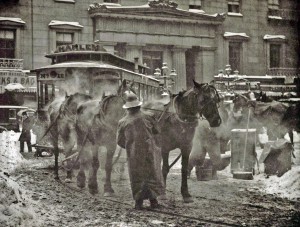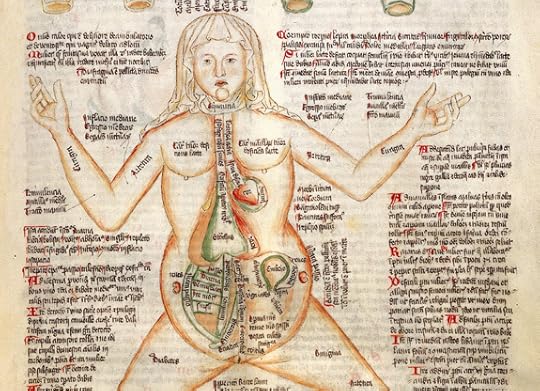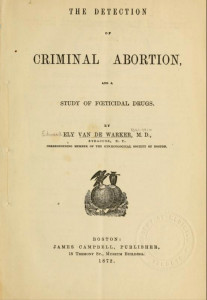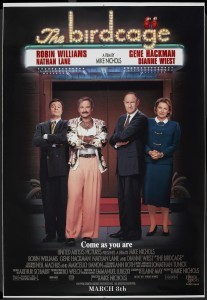Rosina Lippi's Blog, page 10
July 22, 2016
Ms Middleton poses a few questions
Not every book is for every reader. There are many novels out there that don’t work for me, even well-written novels that are broadly praised. And yet, here I am responding to an email from someone who is very dissatisfied with The Gilded Hour:
I have questions about The Gilded Hour. I just finished reading it and, of course, I’m confused by the ending. Why was the murder plot story not finished?
Also, I was confused as the story is supposed to take place in 1883 but, there is mention of cabs, hotels, and traffic. Really? In 1883? The Waldorf-Astoria Hotel didn’t even open in NYC until 1893. I felt like the setting kept jumping back and forth in-time and I had a hard time believing it was really 1883 since there was constant mention of “taking a cab”, “staying at the hotel” and “dealing with traffic.” I’m curious as to why these were part of the setting if it was supposed to be 1883. Any answers?
Also, I’ve never written to an author before, but, The Gilded Hour was very confusing for me since it jumped around in-time. I’m looking forward to your explanations since you are the author.
Kristi
Rather than talk about the fact that the murders will be resolved in the sequel (as I did here if my regular readers want to be reminded), let me address historical accuracy.
Pictures may speak louder than words, but heck, I’ll supply both of them.

Gilsey House Hotel
Manhattan was a very crowded place in the 19th century.
The actress Jenny Lind arrived to perform at Castle Garden (then a performance space) on September 11, 1850. 30,000 people met her at the dock and another 20,000 lined the streets to her hotel. You can read about this in more detail at the New York Times.
But then you could just go to one of the many city guides such as The City of New York: A Complete Guide, published in 1876, and read the ads for the city’s many hotels. You can read this online; the list of hotels starts on page 65.
The Gilsey House hotel, mentioned in The Gilded Hour opened for business in 1871, and is still standing, and is still a hotel. Daytonian in Manhattan — a blog dedicated to New York city history — has a great post about the Windsor Hotel, which was standing and in business in 1883. In general I’d recommend Daytonian in Manhattan when you’re wondering about history.
 In 1883 traffic was a major problem. It was worse, in many ways, because thousands of horses pulling wagons of all kinds meant manure, and no easy way to get rid of it. The photo to the right I like especially because I think it makes it clear what it was like to be on the street in the winter. It’s a Steiglitz photo.
In 1883 traffic was a major problem. It was worse, in many ways, because thousands of horses pulling wagons of all kinds meant manure, and no easy way to get rid of it. The photo to the right I like especially because I think it makes it clear what it was like to be on the street in the winter. It’s a Steiglitz photo.
There were train tracks everywhere, and accidents were common. You can read about one in heavy traffic in 1874 here. There were elevated trains, more accidents. And there were cabs. Such as this line of handsome cabs waiting for customers on the north side of Union Square. That arm you see in the background is from the Statue of Liberty. While they were fundraising to build the pedestal in the bay, they put the arm in Union Square Park and charged people to climb to the top.
All of the images at the end of this post date from between 1880 and 1890. You’ll note the large number of small horse drawn carriages — cabs. Lots of them.
Ms. Middleton, I hope I have resolved your confusion. There’s more information about the historical aspects of The Gilded Hour on the novel’s webpage, in case more questions occur to you.

Union Square, cab line

Lower East Side

Union Square

Winter traffic 1887
Tweet
July 21, 2016
Medical Mystery: I need some input
This post concerns a very detailed and vivid obstetric case with a bad outcome. If you are pregnant, trying to get pregnant (ever), or have a very young baby, probably better not to read this.
 When I’m trying to sort out the fine points of the way medicine was practiced in the 1880s, I sometimes come across medical journal articles that strike me as improbable. Because I’m not a medical professional, I have to rely on my study of 19th century medical texts and friends who are to interpret for me. For example this article with the title A PERFECTLY DEVELOPED MALE CHILD WITHOUT A PLACENTA. Both the mother and child died.
When I’m trying to sort out the fine points of the way medicine was practiced in the 1880s, I sometimes come across medical journal articles that strike me as improbable. Because I’m not a medical professional, I have to rely on my study of 19th century medical texts and friends who are to interpret for me. For example this article with the title A PERFECTLY DEVELOPED MALE CHILD WITHOUT A PLACENTA. Both the mother and child died.
Maybe my M.D. friends will clarify for me if such a thing is possible. Some of the symptoms I recognize from studying other journal articles, but I wouldn’t venture a guess on what was actually wrong here.
Any thoughts?
July 7, 1883. THE MEDICAL RECORD.
A PERFECTLY DEVELOPED MALE CHILD WITHOUT A PLACENTA.
To the Editor of the Medical Record.
Thinking that a short history of this case may be of interest to many of your readers, and desiring to learn from them if any similar case has occurred in their practice (having searched the text-books in vain), I take the liberty of requesting space in your valuable journal for its insertion. November 14, 1882, I was summoned to Mrs. C_____ a well-formed and healthy woman, aged thirty-eight, a primapara [first pregnancy].
Found the patient suffering from labor pain ; pulse, 120; some vomiting ; respiration rapid, and considerable œdema of the lower extremities. Vaginal examination revealed slight dilatation of the os, the vertex presenting. A specimen of urine was obtained and examined for albumen with negative results. Previous history of patient very good, having menstruated at the age of fourteen, and continued to do so regularly without pain until fecundation occurred nine months previously. The pains being unsatisfactory, I left the patient, saying I would return soon. At 11.30 A.M., about one hour after I left the sick-room, I was called in great haste to the patient, messenger saying she had a fit. Arriving at the bed-side found her in a very violent convulsion, which I learned was the second in half an hour.
Inhalations of chloroform were resorted to, which had the effect of modifying the severity of the spasm, for the time at least; full doses of bromide of potassium and chloral were administered, but without effect; the convulsions returning about every twenty minutes. Repeated efforts to dilate the os uteri failed, Barnes’ dilators and the douche being frequently applied in vain, the uterus being anteverted, and the os extremely rigid. At 2 P.M. a hypodermic injection of sulphate of morphine combined with atropiæ sulphas was administered, the bowels having been previously moved.
A marked diminution of the spasms immediately followed the injection, the convulsions not returning up to 4 P. M., but the patient remained unconscious from the first convulsion. At 4.30 P.M. had her thirteenth convulsion. Morphia was again administered hypodermically, but œdema of the lungs set in and the respirations reduced to 14 per minute, the morphia was suspended and the convulsions returned, the patient slowly sinking. At 5 P.M. a consultation was held, when the case was deemed hopeless. All efforts to dilate the os had to be abandoned. Distinct movements of the fetus being observed up to 5 o’clock P.M., a request was made to remove the child by Cesarean section, but was refused. At 6.30 P.M., pulse 100 and feeble; respiration, 17; temperature in the axilla, 99¾; patient rapidly sinking until 7.15 P.M., when she died after her twenty-second convulsion.
In about one hour after the death of the patient I was requested to take the child from its mother, some scruples on the part of friends demanding the separation of the child before interment. I accordingly commenced the operation by abdominal section. On reaching the uterus careful section of that organ was made, when a fœtus was observed partly immersed in an inky-black liquid. An effort was now made to remove the child, but as something seemed to hold the fœtus firmly, I inserted my hand into the cavity of the uterus, when I found the cord very rigid and unyielding. Having severed this obstacle, a perfectly formed male child, weighing about twelve pounds, was removed. Search was now made for the placenta, but without success. There was no placenta. The umbilical cord was found attached to the fundus of the uterus, and the length of the cord did not exceed four inches.
Permission to remove the uterus for examination was refused, and as every movement in connection with the operation was most earnestly and critically watched, I found it impossible to gain possession even of that portion to which the cord was attached. I did succeed, however, in dividing this particular part, but failed to observe any marked difference between it and that portion of the organ previously divided. The amniotic fluid, which was excessive, measuring, I should say, over three pints, was exceedingly black, but in other respects normal.
VALENTINE BROWNE, M.D.
Yonkers, N.Y.
Tweet
June 8, 2016
Researching Names for Writers of Historical Fiction
I read a lot of 19th century newspapers for all kinds of reasons, but this clip from the NYT (November 1885) is a great example of one of the ways I find names.

NYT November 1885
Here we have Giuseppe Giudici who shot and killed Maggiorini Dagahiero, as well as Ling Chun, Ling Yum, Chun Fong and Lung Mow who are all involved in a perjury case.

Click for full size. Central Reporter. 1886 on cases heard in September 1885.
A word of warning: even the NYT was really bad at getting the names of immigrants right. Maggiorini Dagahiero strikes me as off, anyway, so I see if I can turn up either half of it elsewhere and find that even mighty Google produces not a single example of the name Dagahiero beyond the one in this very newspaper article. However, Daghiero does come up — in fact, if you search it will bring up a whole story that is in itself interesting.
Death penalty cases were appealed, I assume, automatically, as they are today. This publication provides both details of the crime and the legal ruling. Because the book is long out of copyright, you can download the whole pdf through Google Books or archive.org (my preference). I can almost guarantee that if you sit down to skim through a volume like this, you will find many stories waiting to be told, the majority of them tragic in one way or another. Some of them bordering on the farcical.
In this case the details just raise more questions, for me at least.
I haven’t yet looked into Ling Chun and Ling Yum, but I can predict, based on past experience, that it will be next to impossible to get any details. First, because the crime was minor and didn’t involve bloodshed (newspapers then, as now, subscribed to the ‘if it bleeds it leads’ rule) but also because Asian names were so regularly and extremely mangled.
In case you’d like to know more about the murderous baker (the details of the legal appeal are missing):

This is a large graphic. Click to open it on another tab, and be patient.

June 2, 2016
HRC: Why not.
I don’t usually use this weblog for political statements, but in this particular instance there’s nowhere else to post this in its entirely, with intact links. So feel free to ignore it, I won’t be offended.
Foreword. Please remember that information about any and every presidential candidate — information that you should be able to find — may not be as accessible as you think it is. Nor is information necessary reliable, no matter how creditable the source may seem. According to the World Press Freedom Index the U.S. is no higher than 49th in terms of freedom of press. Remember too that television networks and newspapers are owned by for-profit corporations, and corporations have a vested interested in what news you hear.
The following are the issues that concern me. Taken together they add up to a simple fact: I cannot support HRC’s bid for the presidency. These issues are not all equal; they are not presented in any particular order, and most important, there is better documentation for some than others. Some allegations are just that — suspicions that have yet to be proven. I only include those allegations which I believe to be creditable enough to raise serious doubts. Where I have a link to what I consider a good source of information/documentation on a particular subject I have included it.
Edited to add: If I had to point to one thing that turned me against HRC, it is her unwillingness to take responsibility for the Honduras coup in 2009 and its horrific aftermath. From The Nation: “Cáceres was a vocal and brave indigenous leader, an opponent of the 2009 Honduran coup that Hillary Clinton, as secretary of state, made possible. In The Nation, Dana Frank and I covered that coup as it unfolded. Later, as Clinton’s emails were released, others, such as Robert Naiman, , and Alex Main, revealed the central role she played in undercutting Manuel Zelaya, the deposed president, and undercutting the opposition movement demanding his restoration. In so doing, Clinton allied with the worst sectors of Honduran society.”
HRC both claims credit for her husband’s presidency and rejects responsibility, depending on the impression she wants to make. She promoted Bill Clinton’s punitive crime bill and disastrous ‘three strike’ legislation; supported his Personal Responsibility and Work Opportunity Act which gutted welfare and aid to dependent families; referred callously to gang-related youth as ‘super-predators’ and used racist imagery to describe black youth as unruly dogs that need to be ‘brought to heel’ (video). See Michelle Alexanders’s “Why Hillary Clinton Doesn’t Deserve the Black Vote: From the crime bill to welfare reform, policies Bill Clinton enacted—and Hillary Clinton supported—decimated black America.” and Cornel West’s editorial on her effects on the African American community. The New Jim Crow
When HRC was Secretary of State there was a pattern of arms sales to countries who also made large contributions to the Clinton Foundation. State Department favors and Clinton Foundation scandal “…. the unethical mixing of Mrs. Clinton’s public work and her personal fundraising/speech-giving/favor-doing. The more evidence that comes out, the more it looks as if that server was set up to provide an off-the-grid means for those two worlds to interact.” From Salon: “As the International Business Times (IBT) reported, under Clinton the State Department signed off on $316 billion in arms sales to countries that donated to the Clinton Foundation. Now the Clinton campaign has received vastly more support from arms manufacturers than any other candidate of either party.” The Washington Post.
HRC said she would release transcripts of her speeches to the big banks, but still has not. If there is nothing to be worried about, she should do as promised and release them. Her refusal signals either a counter-productive, paranoid and frightening inflexibility or fear of repercussions.
Campaign Finance. Wasserman-Schultz rather sneakily rolled back Obama’s DNC ban on unlimited campaign contributions from lobbyist and super PACs; Hillary remained (and still remains) quiet on this. The Nation.
There are also questions about how much of the money she raises for the DNC actually goes to the DNC.
She has abandoned the pursuit of single payer health care and takes large contributions from the insurance industry — according to public disclosures, from 2013 to 2015, she made $2,847,000 from 13 paid speeches to the health industry. She claims that at the time she did not intend to run for president. I find this to be less than plausible.
A disconcertingly close relationship to the banking industry and her insistence that billions of dollars of contributions from that sector do not mean that she is beholden to them is something I find both suspect and patronizing. (See in particular this interview with Elizabeth Warren in which she describes the way Clinton changed her view on the bankruptcy bill after Wall Street money got her elected to the Senate.) More on this.
Example: HRC has many business relationships with big banks that are ethically very suspect, for example, with UBS. The Atlantic
Opposition to the reinstatement of the Glass-Steagall act,
The same is true of the financial contributions she has accepted from the pharmaceutical, oil (her position and history on fracking is especially troubling as is her continued acceptance of support from that industry), and prison industries.
She has repeatedly and forcefully argued for TPP. Her sudden turn around is more than slightly suspect. See The Washington Post on the objections to TPP and Jake Tapper/CNN on HRC’s support of it. Her constant hedging on these issues is less than convincing.
In the slow emergence of information from the Panama Papers, questions about her own finances.
Her ridiculously late and unconvincing reversal on LGBTQ rights.
Her support/voting for the Patriot Act, and for renewal of the Patriot Act, and her enthusiasm for domestic spying.
What I find most disturbing, the thing that solidifies my strong opinion that she is not fit for office is her hawkishness. Note: I would not claim that she alone is responsible for anything mentioned here. But she has been the designer, advocate and executioner of many interventions that were unnecessary. It might be enough to say that she considers Henry Kissinger a role model, but then there’s the hard evidence of how seriously she means that. Failures as Secretary of State (in particular) Libya, Syria, enthusiasm for military intervention and a militaristic stance on Israel/Palestine (as a senator defended Israel’s effort to establish colonies on the West Bank and criticized the UN when it attempted to enforce international humanitarian law.) See also Salon; NYT.
Example of a specific intervention with long-term tragic repercussions: Honduras; the denial of any responsibility for the resulting human rights violations. The Nation, Alternet, Democracy Now
She publicly condemns over-incarceration while playing a significant role in promoting it, and taking financial donations from the private prison industry.
She continues to support the death penalty.
Her stance on immigration and exportation are destructive and anything but humanitarian. Latin Times.
She has supported faith-based initiatives.
She has shown a remarkable lack of concern about evidence of election tampering and voter suppression.
In addition to questions about contribution to the Clinton Foundation that may be linked to her role as Secretary of State, her emails have raised questions about her ties to the controversial for-profit colleges. As an academic and former professor I consider these institutions to be fraudulent, and in the majority of cases, designed to do nothing more than extort money from vulnerable students.
Please note that in all of this I have not addressed the primary season in any detail, though I believe that there is good reason to question the way voting has been conducted and tallied.
These are most (but not all) of the reasons I do not and will not support HRC. Please don’t comment just to tell me that by not voting for Hillary I will be supporting Trump. If Hillary is the nominee and she loses, she alone is responsible for that loss. She has conducted a terrible campaign hampered by lies, misdirection, and disdain for those who disagree with her.
Tweet
Never Hillary

Remembrance of Things Past
I don’t usually use this weblog for political statements, but in this particular instance there’s nowhere else to post this in its entirely, with intact links. So feel free to ignore it, I won’t be offended.
Foreword. Please remember that information about any and every presidential candidate — information that you should be able to find — may not be as accessible as you think it is. Nor is information necessary reliable, no matter how creditable the source may seem. According to the World Press Freedom Index the U.S. is no higher than 49th in terms of freedom of press. Remember too that television networks and newspapers are owned by for-profit corporations, and corporations have a vested interested in what news you hear.
The following are the issues that concern me. Taken together they add up to a simple fact: I cannot support HRC’s bid for the presidency. These issues are not all equal; they are not presented in any particular order, and most important, there is better documentation for some than others. Some allegations are just that — suspicions that have yet to be proven. I only include those allegations which I believe to be creditable enough to raise serious doubts. Where I have a link to what I consider a good source of information/documentation on a particular subject I have included it.
HRC both claims credit for her husband’s presidency and rejects responsibility, depending on the impression she wants to make. She promoted Bill Clinton’s punitive crime bill and disastrous ‘three strike’ legislation; supported his Personal Responsibility and Work Opportunity Act which gutted welfare and aid to dependent families; referred callously to gang-related youth as ‘super-predators’ and used racist imagery to describe black youth as unruly dogs that need to be ‘brought to heel’ (video). See Michelle Alexanders’s “Why Hillary Clinton Doesn’t Deserve the Black Vote: From the crime bill to welfare reform, policies Bill Clinton enacted—and Hillary Clinton supported—decimated black America.” and Cornel West’s editorial on her effects on the African American community. The New Jim Crow
When HRC was Secretary of State there was a pattern of arms sales to countries who also made large contributions to the Clinton Foundation. State Department favors and Clinton Foundation scandal “…. the unethical mixing of Mrs. Clinton’s public work and her personal fundraising/speech-giving/favor-doing. The more evidence that comes out, the more it looks as if that server was set up to provide an off-the-grid means for those two worlds to interact.” From Salon: “As the International Business Times (IBT) reported, under Clinton the State Department signed off on $316 billion in arms sales to countries that donated to the Clinton Foundation. Now the Clinton campaign has received vastly more support from arms manufacturers than any other candidate of either party.” The Washington Post.
HRC said she would release transcripts of her speeches to the big banks, but still has not. If there is nothing to be worried about, she should do as promised and release them. Her refusal signals either a counter-productive, paranoid and frightening inflexibility or fear of repercussions.
Campaign Finance. Wasserman-Schultz rather sneakily rolled back Obama’s DNC ban on unlimited campaign contributions from lobbyist and super PACs; Hillary remained (and still remains) quiet on this. The Nation.
There are also questions about how much of the money she raises for the DNC actually goes to the DNC.
She has abandoned the pursuit of single payer health care and takes large contributions from the insurance industry — according to public disclosures, from 2013 to 2015, she made $2,847,000 from 13 paid speeches to the health industry. She claims that at the time she did not intend to run for president. I find this to be less than plausible.
A disconcertingly close relationship to the banking industry and her insistence that billions of dollars of contributions from that sector do not mean that she is beholden to them is something I find both suspect and patronizing. (See in particular this interview with Elizabeth Warren in which she describes the way Clinton changed her view on the bankruptcy bill after Wall Street money got her elected to the Senate.) More on this.
Example: HRC has many business relationships with big banks that are ethically very suspect, for example, with UBS. The Atlantic
Opposition to the reinstatement of the Glass-Steagall act,
The same is true of the financial contributions she has accepted from the pharmaceutical, oil (her position and history on fracking is especially troubling as is her continued acceptance of support from that industry), and prison industries.
She has repeatedly and forcefully argued for TPP. Her sudden turn around is more than slightly suspect. See The Washington Post on the objections to TPP and Jake Tapper/CNN on HRC’s support of it. Her constant hedging on these issues is less than convincing.
In the slow emergence of information from the Panama Papers, questions about her own finances.
Her ridiculously late and unconvincing reversal on LGBTQ rights.
Her support/voting for the Patriot Act, and for renewal of the Patriot Act, and her enthusiasm for domestic spying.
What I find most disturbing, the thing that solidifies my strong opinion that she is not fit for office is her hawkishness. Note: I would not claim that she alone is responsible for anything mentioned here. But she has been the designer, advocate and executioner of many interventions that were unnecessary. It might be enough to say that she considers Henry Kissinger a role model, but then there’s the hard evidence of how seriously she means that. Failures as Secretary of State (in particular) Libya, Syria, enthusiasm for military intervention and a militaristic stance on Israel/Palestine (as a senator defended Israel’s effort to establish colonies on the West Bank and criticized the UN when it attempted to enforce international humanitarian law.) See also Salon; NYT.
Example of a specific intervention with long-term tragic repercussions: Honduras; the denial of any responsibility for the resulting human rights violations. The Nation, Alternet, Democracy Now
She publicly condemns over-incarceration while playing a significant role in promoting it, and taking financial donations from the private prison industry.
She continues to support the death penalty.
Her stance on immigration and exportation are destructive and anything but humanitarian. Latin Times.
She has supported faith-based initiatives.
She has shown a remarkable lack of concern about evidence of election tampering and voter suppression.
In addition to questions about contribution to the Clinton Foundation that may be linked to her role as Secretary of State, her emails have raised questions about her ties to the controversial for-profit colleges. As an academic and former professor I consider these institutions to be fraudulent, and in the majority of cases, designed to do nothing more than extort money from vulnerable students.
Please note that in all of this I have not addressed the primary season in any detail, though I believe that there is good reason to question the way voting has been conducted and tallied.
These are most (but not all) of the reasons I do not and will not support HRC. Please don’t comment just to tell me that by not voting for Hillary I will be supporting Trump. If Hillary is the nominee and she loses, she alone is responsible for that loss. She has conducted a terrible campaign hampered by lies, misdirection, and disdain for those who disagree with her.
Tweet

May 18, 2016
Facebook & Missing Persons

If you have gone to look for me on Facebook you will have noticed I’m missing in action over there. I deactivated my account for a variety of reasons Eventually I’ll probably re-activate it, but for the time being Sara is still over there. Until I get past this writer’s block business I’ll be keeping a lower profile.
Tweet

May 2, 2016
The Gilded Hour: New Edition, Slippage & Good Stuff Coming
The trade paper edition of The Gilded Hour is now out there in the world.
SNAFU NEWS:

I blame the midnight elves.
If you follow along here and/or on Facebook* you may remember that when The Gilded Hour was in the crucial final stages of the editorial process, my editor left Penguin/Berkley, and I a new editor picked up where she left off.
Please note immediately: neither editor is responsible for the slippage I’m talking about here. The change in editors was not their decision, and both did everything in their power to make the transition as smooth as possible.
And yet, some things went sideways. A lot of small errors never got corrected in the hardcover edition of The Gilded Hour and there were also two larger problems. (1) a scene got abbreviated. Once I realized this had happened I posted the complete scene online and you can read the whole thing here. (2) More problematic was the final scene, which was also not what I intended.
GOOD NEWS
The trade paper edition of The Gilded Hour came out today, and with one exception (the missing scene) all the problems were fixed.
If you already have an ebook edition of The Gilded Hour, you can re-download it and you’ll find that all the corrections are now in place … Except not yet. For some reason I can’t understand, they have fixed the problems a few at a time, and thus if you went right now to re-download it, you would still not have the completely fixed version. And you’d have to download it a third time. So don’t, okay? Wait until you see a notice here that says Ebook editions now completely corrected — download it again!
This may still be a couple weeks in the future, but the day will come.
LESS GOOD NEWS: If you have a hardcover copy and you (quite reasonably) don’t want to buy the trade paper edition or an ebook edition, then here’s what I can offer you: Sometime in the next week I will post a pdf for you to download. In it will be:
(1) the full scene that was accidentally shortened;
(2) a list of the small corrections;
(3) the final scene as it appears in the trade paper edition and
(4) “The Surgeon Investigation Report” Documents from the historical archives of the (fictional) New York police department which provide some insight into the murder mystery you have all been wondering about.
(5) a recently discovered love letter between two of the characters who must remain nameless for the moment.
You can download this chock-full-of-goodness pdf (once I post it) no matter what edition of the book you bought or borrowed from the library.
This is irritating for you and terribly frustrating for me. But it is what it is, and I hope this will help. So watch this space.
Also: I’ve got a pile of signed trade paperback editions sitting here that I’m about to send out to the people who won copies in various giveaways.
*I post more often to Facebook these days, so if you are over there, it’s a good place to check for updates.
Tweet

April 15, 2016
The Gilded Hour, Race & Ethnicity over Space
If you remember the Mazzini Hotel from The Gilded Hour (where the Italian Benevolent Society met), you wouldn’t have any way to know that there really was a hotel by that name on the spot on the south border of Washington Square Park in the early 1880s. That whole neighborhood, south of the park and north of Houston, was home to many immigrants and was ethnically very diverse at that time.
The city’s largest group of French and French Canadians was there, as well as a long established African American community that first began to come together when this was still the outskirts of the city. Italians were also well represented, with fewer Irish and almost no Germans. This larger area is important in the sequel to The Gilded Hour, as is the area around the Jefferson Market (to the east of the park) which you will be familiar with already. This map indicates that the Jefferson Market area and the neighborhood tmoving north along Sixth Avenue was populated primarily by non-immigrants.
Note that the color bars don’t map to particular streets; they are meant only to provide relative densities for the different ethnic populations.
This is a detail from a very large map, one that is quite hard to read. I’ve reconstructed the data to the best of my ability and on the basis of additional research.
Tweet
The post The Gilded Hour, Race & Ethnicity over Space appeared first on storytelling.

April 4, 2016
Trump, Abortion & The Gilded Hour
 Early in my planning for The Gilded Hour I was awash in academic historical publications, 19th century newspapers and medical journals, and general reading about women’s health issues of the time and the introduction of women to the medical professions. The stories I came across that struck me as most interesting had to do with poor women immigrants, mostly Irish and Italian and Roman Catholic, who were stuck between that proverbial rock and a hard place. They had no money for birth control, and even if they did, their priests told them it was a sin to do anything but increase and multiply. Priests had no concrete help to offer, of course. Only punishment for a woman who dared challenge this world view, and punishment of the worst kind: eternal damnation. If they were desperate enough to find a way to end a pregnancy, they knew the odds were against them.
Early in my planning for The Gilded Hour I was awash in academic historical publications, 19th century newspapers and medical journals, and general reading about women’s health issues of the time and the introduction of women to the medical professions. The stories I came across that struck me as most interesting had to do with poor women immigrants, mostly Irish and Italian and Roman Catholic, who were stuck between that proverbial rock and a hard place. They had no money for birth control, and even if they did, their priests told them it was a sin to do anything but increase and multiply. Priests had no concrete help to offer, of course. Only punishment for a woman who dared challenge this world view, and punishment of the worst kind: eternal damnation. If they were desperate enough to find a way to end a pregnancy, they knew the odds were against them.
Almost worse, the rest of the world .saw them as hardly better than vermin, unwashed and undesirable and often unworthy of raising their own children. Women coming into the medical field for the first time, limited primarily to the care of the poor and most vulnerable, would have little chance of providing real help.
One evening after I stopped mulling all this over, I turned on the television and found The Birdcage had just started on a cable channel. You’re wondering what the connection could be between this film, Trump, and The Gilded Hour. Hold on, it’s coming.
Backstory: The Birdcage

THE BIRDCAGE (1996) Written by Elaine May and directed by Mike Nichols, was a remake of the 1978 French film La Cage aux Folles.
An ultra-conservative Republic senator and his wife have come to Florida to meet the family of their daughter’s new fiancé. The parents don’t know one crucial thing: their soon-to-be son-in-law was raised by two loving fathers, one of whom (played by Robin Williams) owns The Birdcage, a popular cabaret, and the other (his husband Armand, played by Nathan Lane) is the show headliner, the drag queen Starina. To avoid conflict, Nathan Lane’s character is banished from the dinner in the hope they can keep the Senator and his wife in the dark. But Starina will not be sidelined, and she shows up to the dinner in drag — specifically, a middle aged matron wearing pearls. In the scene in question they are discussing family values, and the Senator raises the subject of abortion and the murder of doctors who perform them. Hard to imagine how this could be funny, but it is. Here’s the exchange that caught my attention (I couldn’t get a film clip, though I tried):
Senator: Of course, it’s very wrong to kill an abortion doctor. Many pro-lifers, I don’t agree with them, but many of them sincerely feel that if you stop the doctors, you stop the abortions.
Albert: Well. That’s ridiculous. The doctors are only doing their jobs. If you’re going to kill someone, better to kill the mothers. That will stop them.
I was so startled by this idea that it consumed me for weeks. It hadn’t ever occurred to me before, but why did extremists go after doctors, and not the women who sought out abortions? This sent me off in a new research direction, and as a result, there was a shift in the evolution of one part of The Gilded Hour’s plot. I didn’t start out with the idea of writing a murder mystery, but in the end that’s what I got: what happens when rhetoric about women who have abortions as murderers is pushed to the point of no return.1
But all this came up again because last week Donald Trump, in his unquenchable thirst for attention, went to the extreme and suggested that women who have abortions should be punished. He immediately backpedaled, but as various journalists have pointed out, Trump was actually being too candid and as a result brought into the light of day the kind of repercussions extreme conservatives imagine for women who have abortions.
And this isn’t even hypothetical; there are real world examples, and you don’t have to travel far to see the results. In El Salvador Mirna Ramírez spent almost thirteen years in prison. “I was put in jail because I had a premature birth and they accused me of an abortion.” (source). In 2014 Amnesty International published On the Brink of Death: Violence Against Women and the Abortion Ban in El Salvador (pdf download) if you are interested in a more detailed view of what can and does happen when the government takes control of women’s lives and bodies.
Trump did us a favor, in that he reminded us that we have politicians who admire the minds that wrote and enforce abortion laws in El Salvador.
Republican presidential candidate Sen. Ted Cruz (R-TX) is touting the endorsement of Troy Newman, the president of Operation Rescue and a board member for The Center for Medical Progress (CMP). Newman is one of the country’s most notorious anti-choice activists. He was a “driving force” behind CMP’s series of misleading videos smearing Planned Parenthood and has a long history of incendiary remarks that include “praising the killing of abortion doctors and calling women who have abortions ‘murderers.'” (MediaMatters)2
I wrote a novel about these themes in part because younger women seem to have no sense of what was, and what could be again. Trump just reminded me that I wasn’t overreacting.
By the way, in case you’re thinking that things wouldn’t be so bad in the current day because of advances in medicine, I feel the need to correct that misconception. This is from a case study from a 2009 medical journal article that concerns a healthy twenty-four year old woman who attempted to end her pregnancy
by passing a coat hanger deep into her vagina until she felt a “pop,” followed by a gush of fluid and the onset of her abdominal pain. Speculum exam noted no evidence of lower genitourinary injury. Given the patient’s persistent hemodynamic instability and acute abdomen, the general surgery service performed exploratory laparotomy, where one liter of blood was found in her abdomen with a hemostatic wound at the uterine fundus. Broad spectrum antibiotics (ampicillin, gentamicin, and clindamycin) were given. Her postoperative course included sepsis, chorioamnionitis, fetal demise, acute respiratory distress syndrome (ARDS), and a total abdominal hysterectomy with bilateral salpingo-oophorectomy for complications of endomyometritis.
On some level I worried that I might run into backlash from anti-choice readers. If that has happened in reviews, I haven’t seen them yet. ↩
Closer to home articles at fifthirtyeight.com document that there are people who believe a woman who has an abortion should be charged with murder (What Do Anti-Abortion Demonstrators Want.) ↩
Tweet
The post Trump, Abortion & The Gilded Hour appeared first on storytelling.

The Gilded Hour Giveaway: Trade Paper May 3
 I have a question for you, because on Wednesday I’ll be at Village Books in Fairhaven to do a short reading as a precursor to the Chuckanut Writers Conference (where I’ll be teaching, in case you missed that) and I’m at a loss for what to read.
I have a question for you, because on Wednesday I’ll be at Village Books in Fairhaven to do a short reading as a precursor to the Chuckanut Writers Conference (where I’ll be teaching, in case you missed that) and I’m at a loss for what to read.
Picking the right passage that lasts for 10-15 minutes when the audience doesn’t know you or your work is tricky.
It’s got to be engaging, not give too much away, and in my experience, it goes over best if it’s something amusing rather than dark. Any suggestions? Particular scenes from particular books? It doesn’t have to be from The Gilded Hour. However: if I get suggestions from at least 15 different people I’ll pick one name at random and that person will get a copy of the trade paperback edition of The Gilded Hour when it comes out on *****May 3.****
This contest is separate from the similar contest on Sara’s FaceBook page. You can enter both drawings, but please if you do, two different suggestions.
Tweet
The post The Gilded Hour Giveaway: Trade Paper May 3 appeared first on storytelling.








